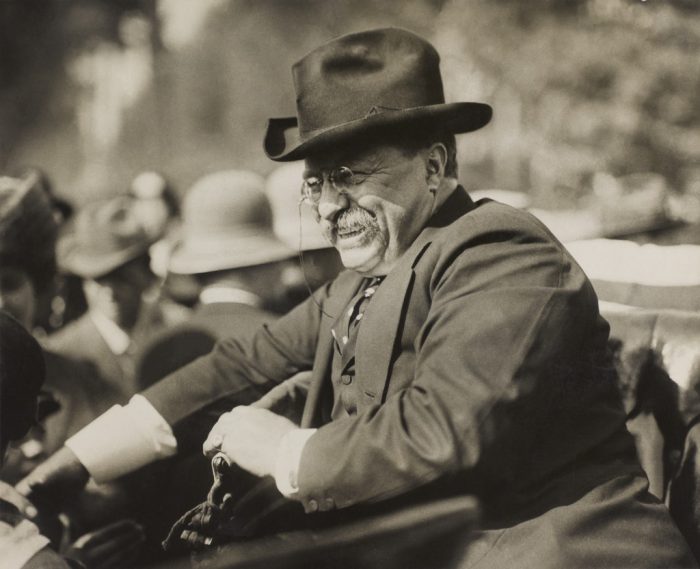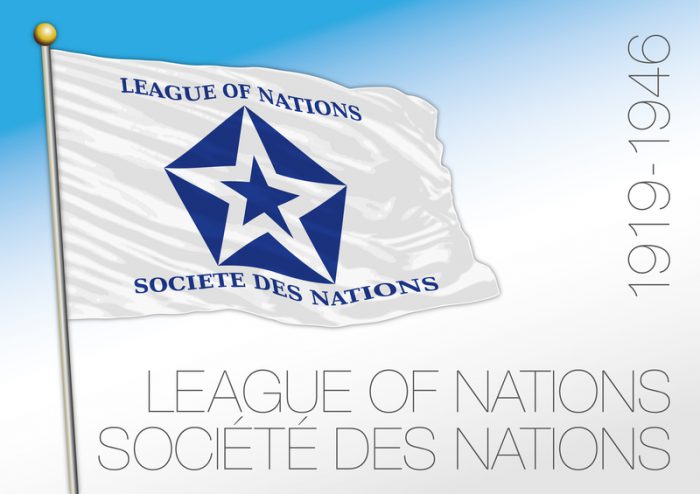Today is Remembrance Day in Canada, or Veterans Day in the United States. It is a day to salute, give thanks to, and reflect upon those who fought for our countries in past wars.
100 years ago today — November 11, 1919 — King George V of England started this tradition. Originally it was called Armistice Day. This was because it marked a year since the armistice (peace treaty signing) to officially end World War I (1914–1918).
But at this time, the world was doing more than just remembering this moment of peace. It was trying to preserve it. And to do so, some people came up with a completely new and unique idea.
They called it the League of Nations.
Too much war

In his 1906 Nobel Peace Prize acceptance speech, American president Theodore Roosevelt called for the world to make a "League of Peace". (Wikimedia Commons)
Before we get to why this idea was so special, let's take a look at the world before WWI. There was a LOT of war. This was especially true in Europe where the borders of some countries had been drawn and redrawn every few years for thousands of years. If nations had conflict with one another, diplomats would try to come to agreements or make alliances (partnerships). But generally, sooner or later these conflicts always led to war.
WWI was different. At the time, it was the worst conflict the planet had ever seen. There had to be a better way than just fighting it out, thought many. As it turns out, people had long been thinking about making an organization of all the world's countries that could help solve disputes and promote peace, calling it a "league of nations" before WWI even began.
But now that the war was finished, it was the time to do it for real.
A league of our own
British Prime Minister David Lloyd George, Italian Prime Minister Vittorio Orlando, French Prime Minister Georges Clemenceau, and American President Woodrow Wilson at the Paris Peace Conference, May 1919. (Getty Embed)
The League of Nations took real shape in 1919 during the Paris Peace Conferences, which included Britain, France, Italy, Japan, and the United States. Then US President Woodrow Wilson pushed his fellow nations hard to create an international organization that would "protect great and small states alike".
On June 28, 1919, the group agreed, signing a promise that led to the League of Nations becoming a reality on January 16, 1920. Over the next 26 years, the League would have as many as 58 members. It helped to solve dozens of disputes between countries, fight for the rights of workers, combat disease, and much more. It was unlike anything the world had ever seen.
If at first you don't succeed...
Without the League of Nations, the United Nations might not exist. (Getty Embed)
Of course, the League of Nations sadly didn't fulfill the biggest dream of those who helped create it. In September of 1939, Nazi Germany invaded Poland and World War II (1939–1945) began. By this time, the League had long been ineffective. Countries like Germany, Italy, and the Soviet Union simply left. And strangely, the United States never joined.
But the idea lived on. When WWII ended, countries around the world doubled their efforts to make an international organization of peace and resolution, and it still survives today under the name United Nations (UN).
The UN still isn't perfect but on this day where we remember the many thousands of soldiers who fought and died in service of our countries, it is also worth remembering the many who tried to make sure we never again saw war as the only option.
 The official flag and symbol for the League of Nations, the world's first international organization for peace. (© Friziofriziofrizio - Dreamstime.com)
The official flag and symbol for the League of Nations, the world's first international organization for peace. (© Friziofriziofrizio - Dreamstime.com)









